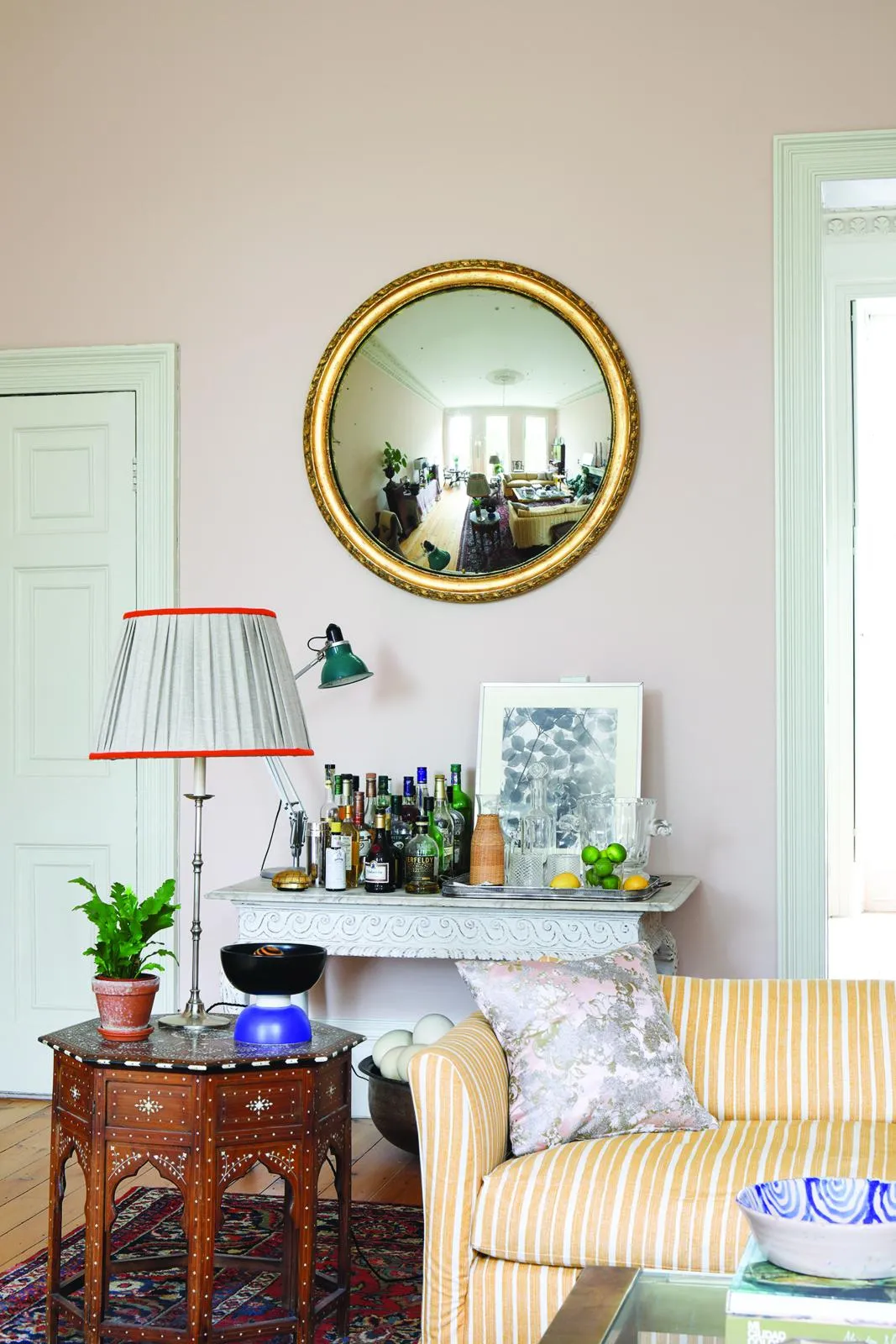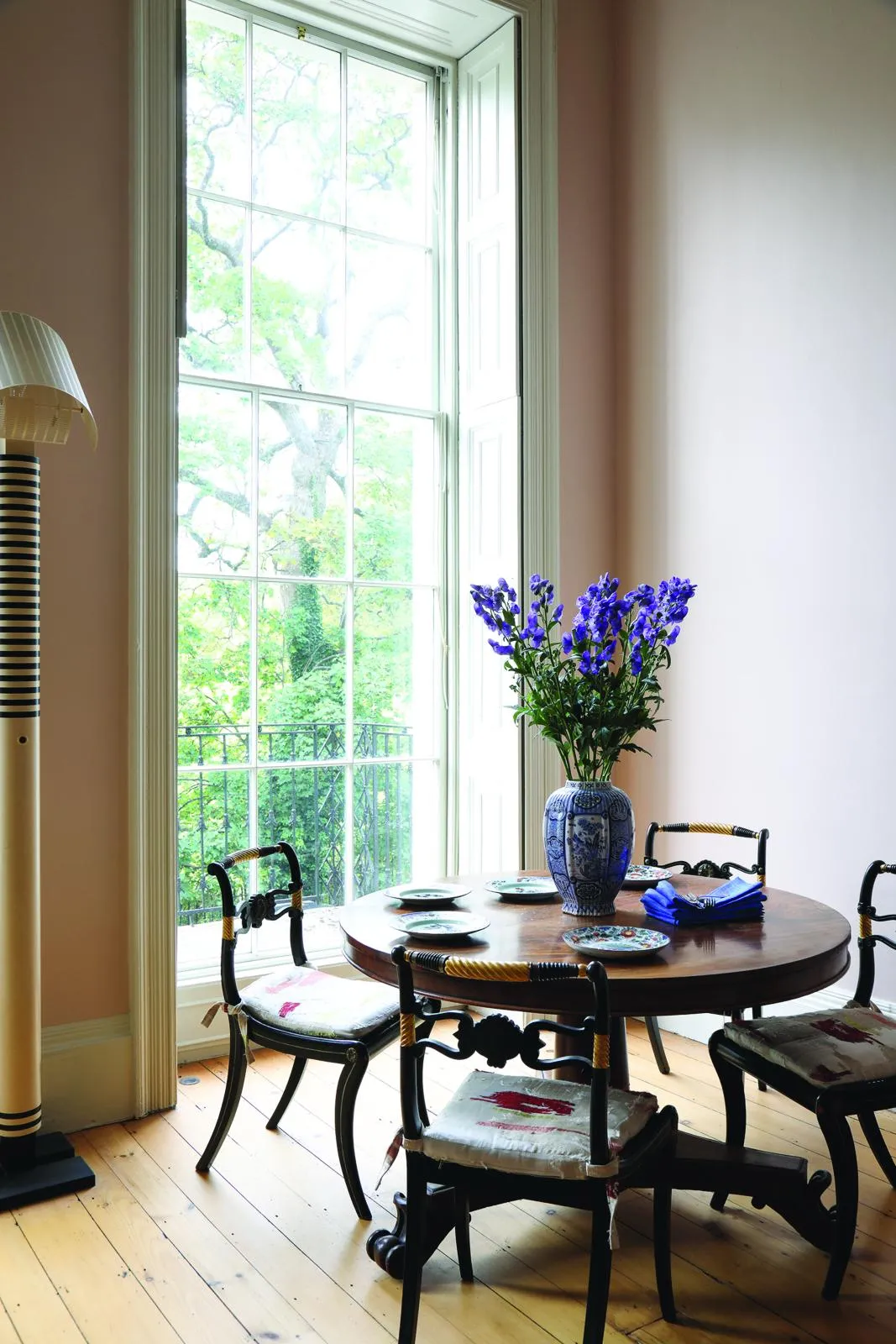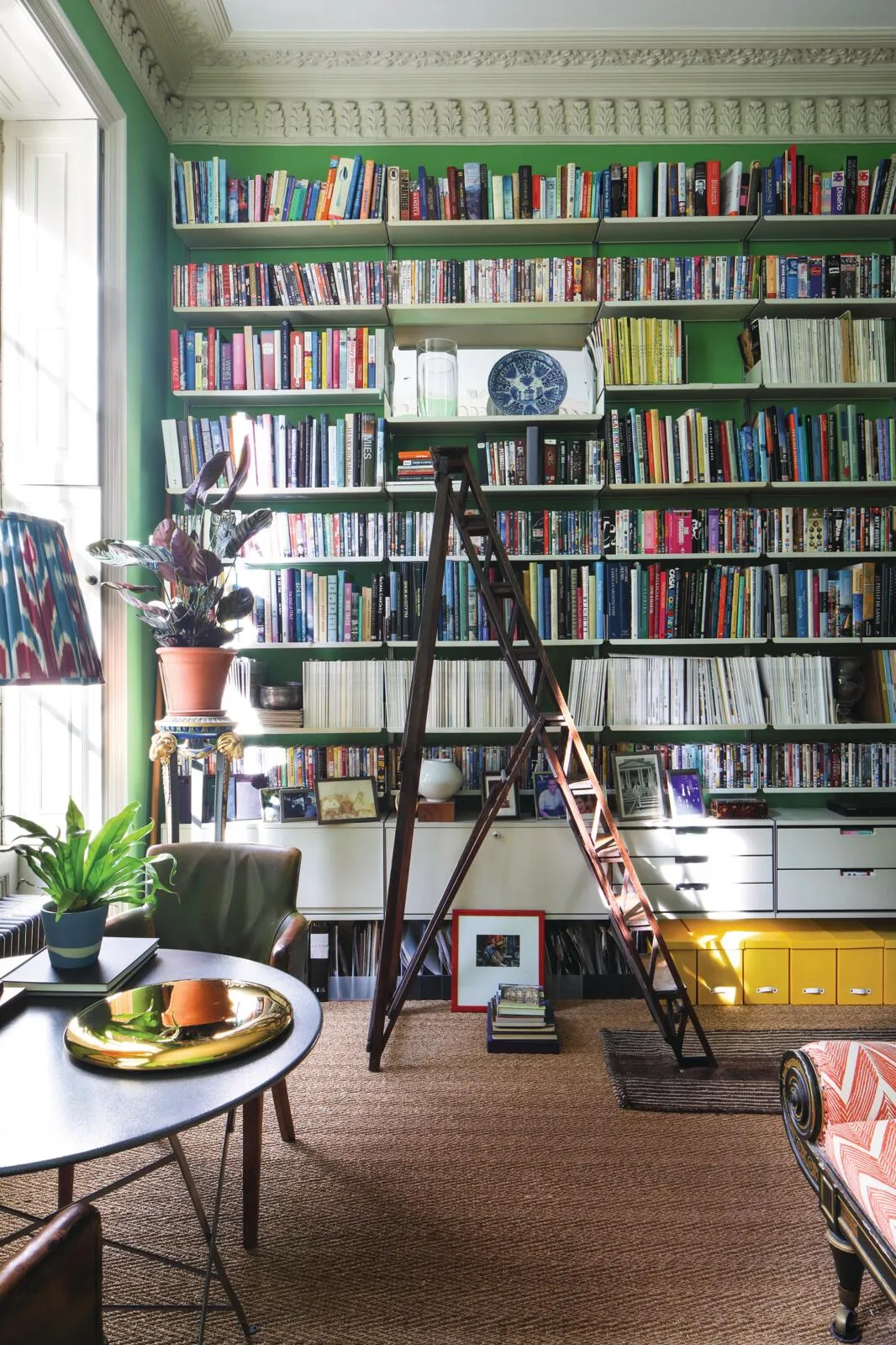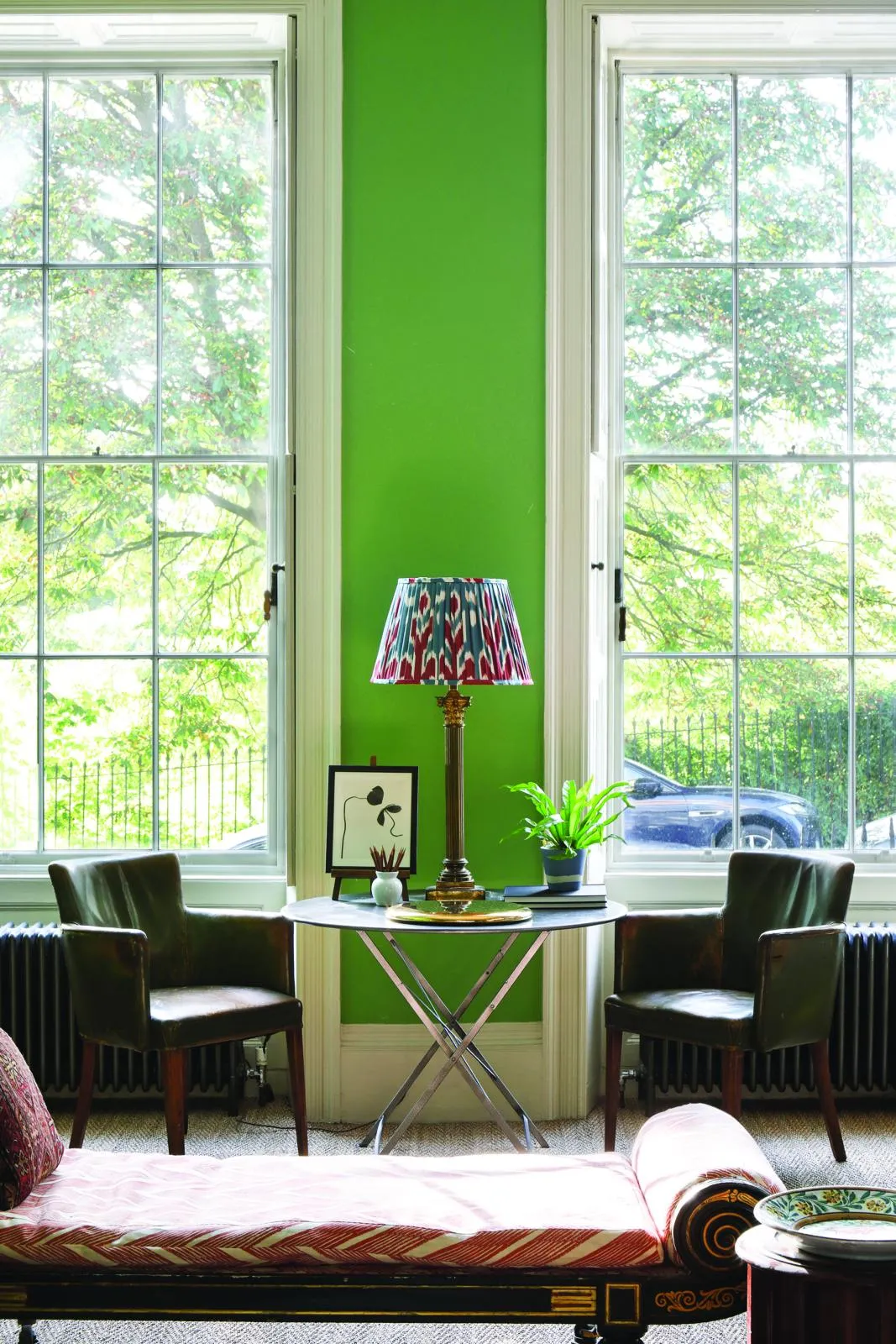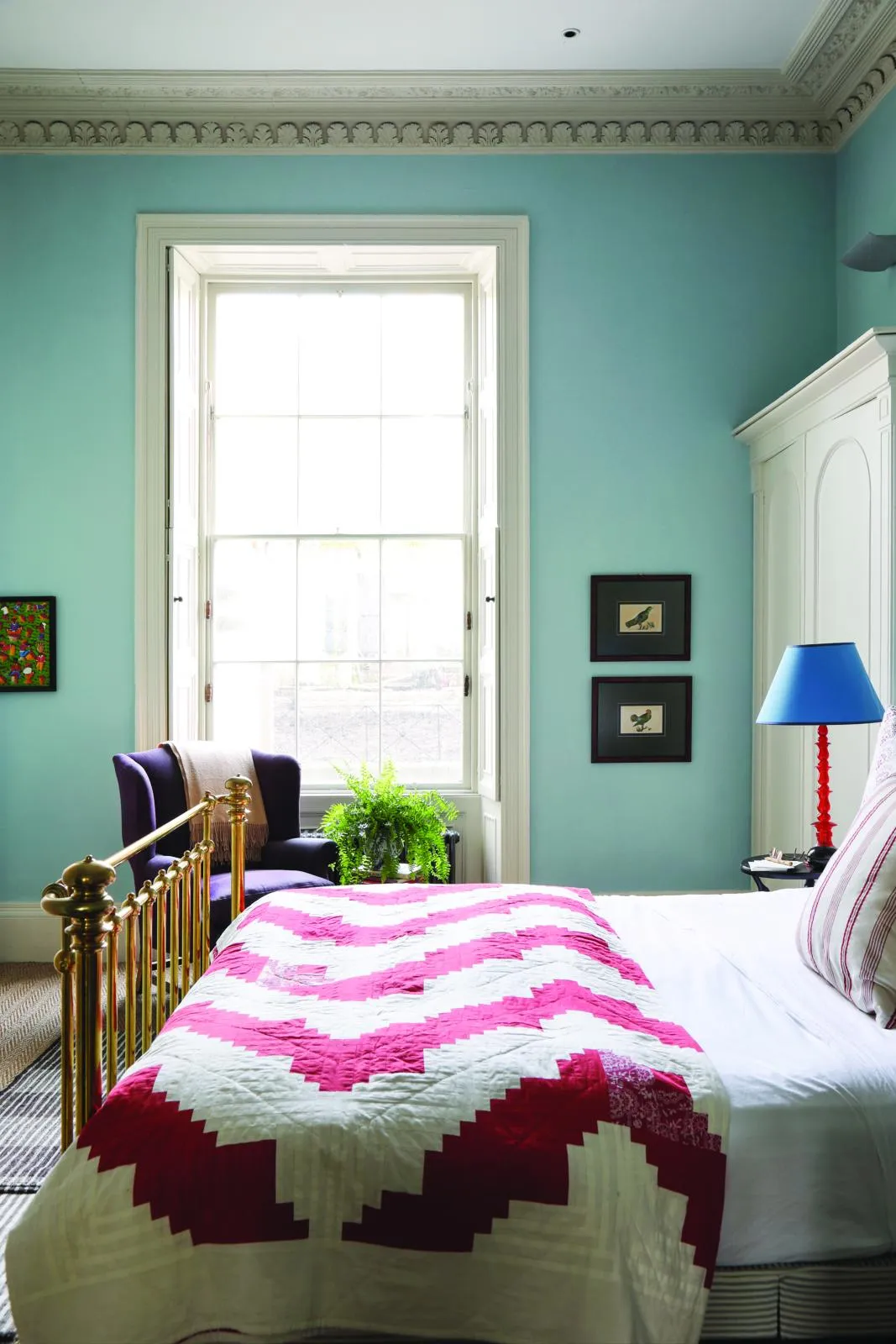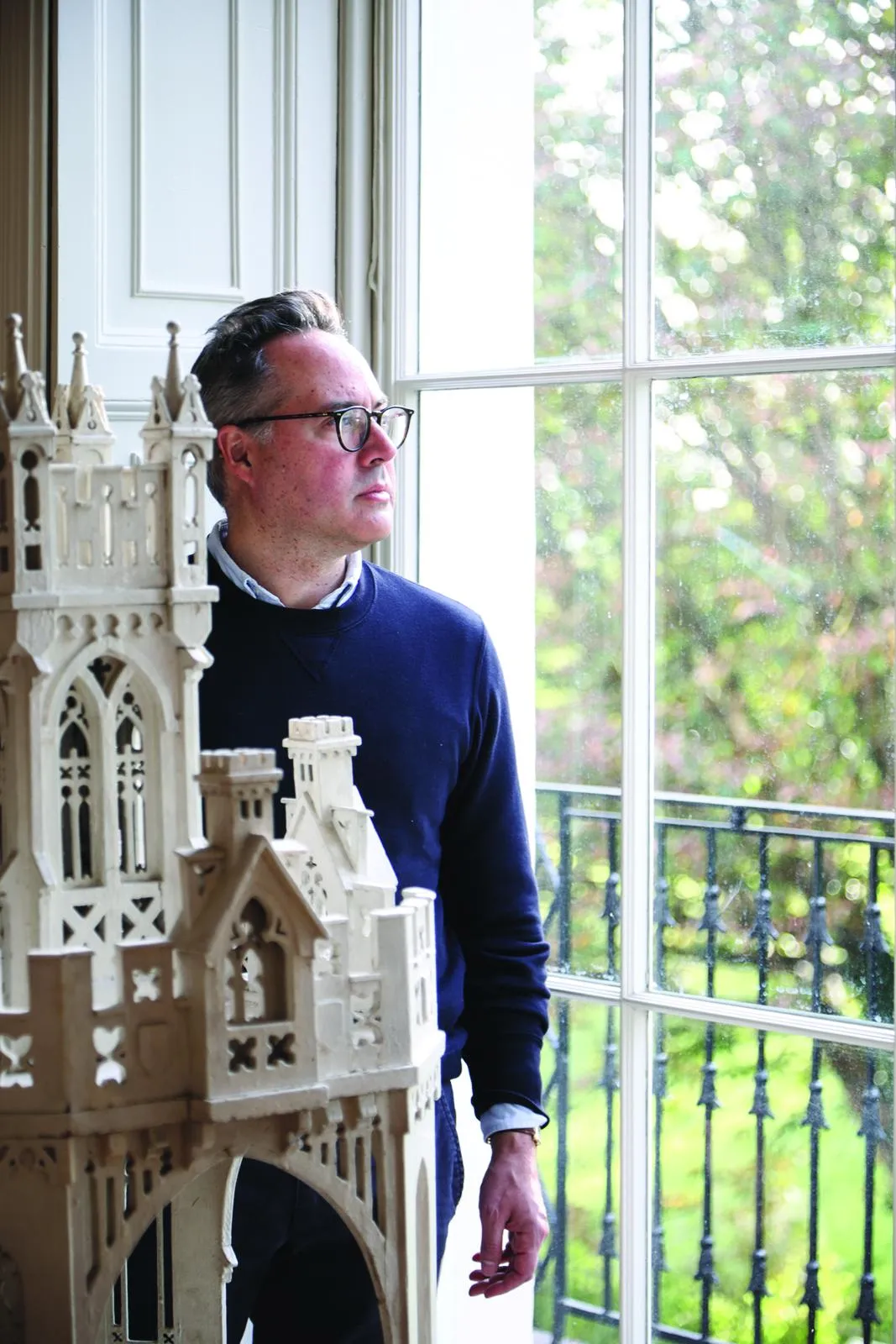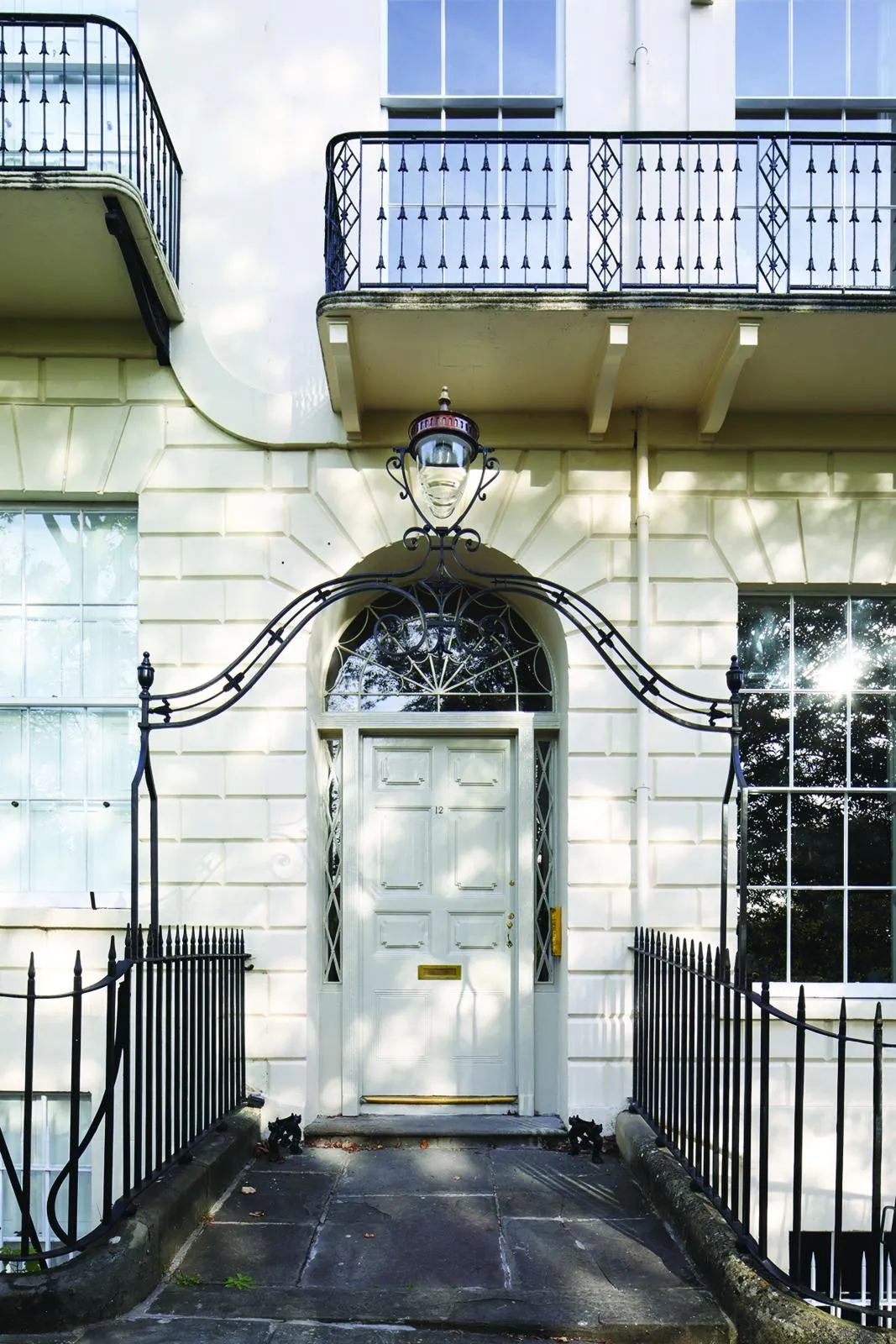The influence of good mentors can last a lifetime, as Emilio Pimentel-Reid will tell you. The design editor has had some of the best. From his earliest employer, Calvin Klein, he absorbed the virtues of minimalism, while a stint with the late fashion designer and antiques lover Oscar de la Renta immersed him in colour and pattern.
This led to working at Nest, a ‘rarefied’ interiors magazine in New York, where office decor included a floor-to-ceiling Mark Rothko and Aesthetic Movement ceramics and furniture, mixed with pieces from Maison Jansen. All this, he reflects, gave him the confidence to combine ‘the best I can afford’ of old and new.
It’s an approach he has applied to doing up his Bath apartment. Ranging over the ground and first floors of an 1815 stone terrace, Emilio describes the colourful setting as the ‘reward’ for his daily commute into London, where he runs a design industry consultancy. The ceilings soar to five metres high and sunlight falls in bars through the sash windows, which are even larger than the ones in Bath’s Royal Crescent.
‘It was the last hurrah for glazing,’ says Emilio. And then there are the views. During lockdown, he perched on his African stool at the Regency table overlooking the cascading horse chestnuts of the park opposite – one of the first public green spaces in the country. ‘Bath is good for the soul. Being surrounded by beauty can only be a positive,’ he says.
You might also like a vintage-filled Regency villa in Bath
Leading conservation architects, Donald Insall Associates, restored the Grade I-listed flat to its original layout, opening up the main reception areas. Downstairs is an ‘indulgent’ library, bedroom and bathroom suite. Upstairs are
the drawing room and kitchen, ‘formerly the withdrawing room – and a work in progress’. Linking the two is the highly unusual private lift: ‘It’s handy for wine deliveries.’
The building was designed by John Pinch the Elder in 1815. Miraculously, it survived both the Blitz and the ‘Sack of Bath’ – documented in the book by Adam Fergusson – in the 1970s, when scores of Georgian buildings were demolished during the frenzy of post-war modernisation that devastated so many historic town centres. Emilio takes his role as custodian very seriously.
This ‘community activist’ has started a residents’ association and liaises with specialist craftsmen – masons, ironworkers, plasterers – to conserve the terrace. He is currently reinstating the wrought-iron ‘overthrows’ and lanterns: ‘I’m proud to say that six of the 11 are already up.’
The stone façade, which glows on summer afternoons, reminds him of home. Emilio grew up in Santo Domingo, a UNESCO World Heritage Site in the Dominican Republic. ‘It’s the oldest European settlement in the New World, with the first university and hospital,’ says Emilio, whose surname reflects his Portuguese and Scottish ancestry.
‘The historic buildings are built from coral stone, which is similar in colour to Bath stone. The windows – and the light – remind me of my childhood home. When you’ve grown up in the Caribbean, light becomes extremely important.’
Emilio’s MA in History of Fine & Decorative Art at Sotheby’s Institute (his other degrees are in Economics and separately in Fashion Design) opened his eyes to ‘the different art and collecting categories. I like to call it my shopping degree… I’ve learnt that if something is of good quality and serves its purpose, it will have longevity, whether it’s old or new.
You might also like a Regency villa filled with renovated antiques
The past year has made us focus on what’s important for us in our homes. We realised what works – or what was awkward or fell apart. We want things that make us feel happy,’ adds Emilio, whose book, Bold British Design, celebrates contemporary UK makers.
A knowledge of the past is key to understanding modern design, he says: ‘History is so important in my field. It allows me to build up a context which enables me to evaluate what makes a good design. I can’t get enough of historic houses, but inspiration comes from everywhere. Not because everything is inspiring, but because over the years I’ve learnt to look for it.’
Emilio’s apartment is quintessentially Regency – the ceiling roses and mouldings are original – but there are anomalies due to changing fashions, like the Victorian fireplaces. That suits Emilio’s catholic tastes. ‘It’s not a museum. When the first people moved in here it was a brand-new building and they probably brought a real mix of things with them.’
He appreciates the way that a table by Oscar Wilde’s favourite designer, E.W. Godwin, ‘talks’ to the equally Victorian tiles of the fireplace in the drawing room, where original Baltic pine floorboards ‘creak delightfully’.
He has used Regency pieces like the dining table and dining chairs because they sit well with the proportions of the apartment. But he is equally fond of the Spanish 1970s coffee table from Brownrigg in Tetbury, or the colourful 1980s Shogun floor lamp by Swiss architect Mario Botta, a luminary of the post-modernist Memphis movement.
From his days as decorating editor of British ELLE Decoration, Emilio has acquired an appreciation of homegrown design. A daybed is reupholstered in Enid Marx’s 1930s Zig Zag fabric from Borderline Fabrics; it is a graphic contrast to the contours of the Regency daybed, or the jaunty cushions with their Howard Hodgkin designs in the drawing room.
You might also like an art-filled Regency townhouse in Brighton
The paint colours are special mixes, such as the pink walls of the living room, made by Little Greene to complement his skin tone: ‘Experts advise that you paint your space in a colour that suits the room; but why not use a colour that flatters the homeowner?’ Why indeed not?
He insisted that the previous owner leave behind the bookshelves, a timeless design by Dieter Rams for Vitsœ, which lines one wall of the library. Design and travel dominate, from Portuguese interiors or Brutalist architecture to the palm-shaded architecture of the Caribbean.
Some of his most useful titles are auction house catalogues from the sales of famous collectors like Charles de Beistegui, the Duke and Duchess of Windsor, or US fashion designer Bill Blass. Crammed with provenanced gems, these glossy publications are an education in themselves: ‘You can learn so much from other people’s eye – and taste,’ he says.


